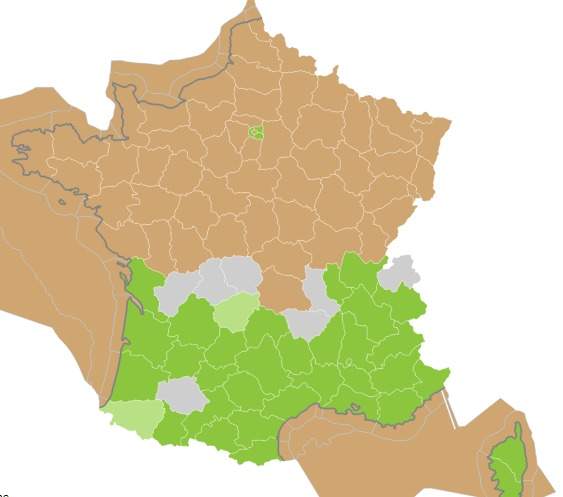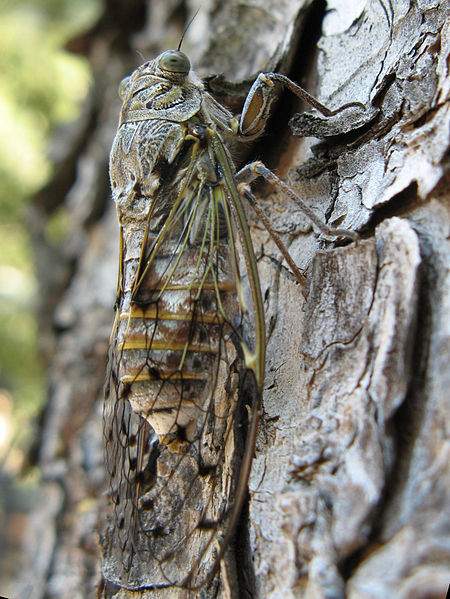Cicada orni known by the following names Cigale grise (la), Cigale de l'orne (la), Cigale panachée (la), Cacan (le)
Body length: 28 mm; total length, wings included: 39 mm; wingspan: 74 mm. Their body is dark greyish brown and green, coated with a greyish frosted, dusty looking appearance. The ends of their wing veins are punctually spotted. This morphological trait is characteristic of the species.
Fertilised females will use branches of varying sizes to deposit their eggs which they perform using an upside down position. The laying surface or substrate is usually dry and following hatching the first stage larvae drop to the ground and begin their underground life that will last from 3 to 4 years. They dig a gallery in the ground in order to reach the root system of the trees. Equipped with mouthparts of the "stinger-sucker" type, they feed on the sap present in the roots. In the fifth and final stage, the larva rises to the surface and seek support for their imaginal molt.
Adults have a relatively short life that lasts from 2 to 4 weeks and like the larva they feed on sap, They can be seen from mid May until mid October with a peak period between mid June to early September.
Males begin to cymbalise, (nuptial call), as soon as they emerge, The height chosen for this is very variable and appears to depend on the sunshine available but is generally on trunks and branches of a large diameter where they are often present in large numbers,
They are found mainly in environments with a high vegetation structure and a significant presence of woody trees. The most favourable habitats are clear woodlands and scrubland. The habitat structure should not be too dense that it prevents light from penetrating. The species is concentrated in the Mediterranean area, (up to 1600 m altitude), but can be found as far north as a line drawn between La Rochelle and Geneva.
To listen there is a sound file HERE

